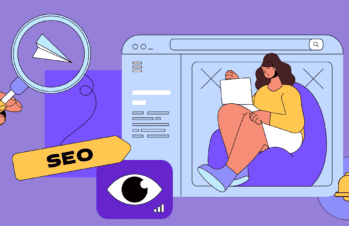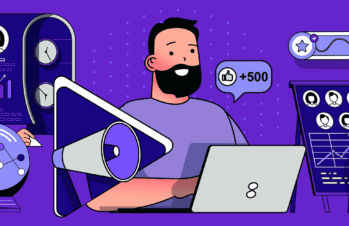Make everything user friendly
Your website is the front-end of your operations, the shining gemstone of all your marketing efforts. This is why you should make everything as painless as possible when people are trying to sign up for something.
Streamline it
The most important component of your offer should be clearly visible. Use simple, bright colors and clean text links. If you want your visitors to view two or three more pages, make sure that they can navigate the deeper pages with little effort. If they don’t want to navigate other pages anymore, the registration form should easily be seen on the landing page they are on.
There is not fixed formula for the placement of your main call to action. It all depends on your website’s over-all design, the length of your copy, the number of illustrations and graphics, etc. You don’t have to guess. What you can do is create different versions of your landing pages with the call to action box in different places. Ask people to take a look, and see which placements convert well. Testing is key.
Additionally, you can also experiment with your font styles and font sizes.
Straightforward registration forms
What do you need their home addresses and phone numbers for? People are no longer comfortable with sharing this information with total strangers, much less to someone who is amassing hundreds or thousands of people’s names and email addresses. If you do not have a direct use for such information, then don’t ask the information from people trying to opt-in. If you need a person’s physical address, you can ask them confidentially in specialized (customized emails) and you have to reassure them that all the data would be held in strict confidence. Ask for a name and their email address- that’s all you need for an opt-in. You can get to the nitty-gritty of their private lives after you get their email (and trust).
What’s in it for them?
Really, with the amount of junk on the Internet today you have to be really convincing with your offer. And you have to be reassuring as well. You can go the extra mile for more opt-ins by providing sample screen shots of what they will be receiving in the mail. Live samples such as online PDF copies of a few newsletters can also be helpful (make sure that your ‘snippets’ are good quality).
More options means more opt-ins
Letting people ‘shop’ for the stuff that they would receive in their personal mail boxes is one of the most efficient ways of multiplying the number of your opt-ins. For example, you can offer them a newsletter, but directly beneath the check box for the newsletter is another check box for a good primer or a cool free eBook. You see the difference already? They’re not stuck with something that looks machine-wrought. They see a list of free goodies that they would get immediately by just giving away their email address. Additionally, you can also offer your new opt-ins technical options. For example, they can choose between plain text emails and vanilla-flavored HTML emails. They can also opt for monthly newsletters, daily alerts, bi-daily alerts, weekly primers, and more. Expanding to the social networks such as Facebook can also help increase the exposure of your current deals. It’s fast, and it works.
2. More value for their opting-in
There’s a difference between adding one-time bonuses for opt-ins and genuine quality content delivered over time. In the age of Web 2.0, the agile email marketer gets the most number of conversions. Don’t rely on ‘carrots’ too much because they won’t get people talking about your website much. ‘Carrots’, as we’ve mentioned earlier, are one-time bonus you offer people to just sign up (but it is by no means an effective method of convincing people to buy anything from you). If you can produce engaging case studies with real statistics and usable data for your mailing lists, then you have something.
3. Invite people to opt-in whenever you are communicating directly
Your website can be considered direct communication; the same applies to Twitter and Facebook. So what’s stopping you from offering your email course or newsletter when you’re actively communicating with your clients?
Here are just a few of the places where you can include an efficient “call to action”.
Your website
Of course. It should be at the center of all your activities.
Social networking
I will say this again and again: use social networking to your advantage.
Call centers rock!
Inbound call center communications are actually a vibrant source of conversions, if you know how to format the script right. With B2C communications, it’s always wise to include an invitation to sign up or opt-in for something when the customer is about to close the chat window. If your customer service representative provided good service, then there’s no reason why a cheerful and polite request to sign up would be denied. Think about it; what do you have to lose if you ask your agents to include an extra link at the end of each B2C conversation?
Conferences and other engagements
Nothing like good old offline marketing to get your website started. While you will get only a fraction of the total number of people attending a trade show or conference, you’re still getting more people to sign up. Remember, business cards are not a sign of agreeing to anything. Ask for permission first and tell your potential consumers what you have to offer when they agree to register.
Make your content shareable
Social networking works best if people can share what they saw on your email or website to other people. Actually, this is already the beginning stage of viral marketing. By encouraging involvement, you’re making people feel that they are part of something dynamic. However, don’t expect thousands of new subscriptions with mere Tweets and Diggs. The main impetus for creating content that is shareable is exposure. More exposure means better business, remember that.








